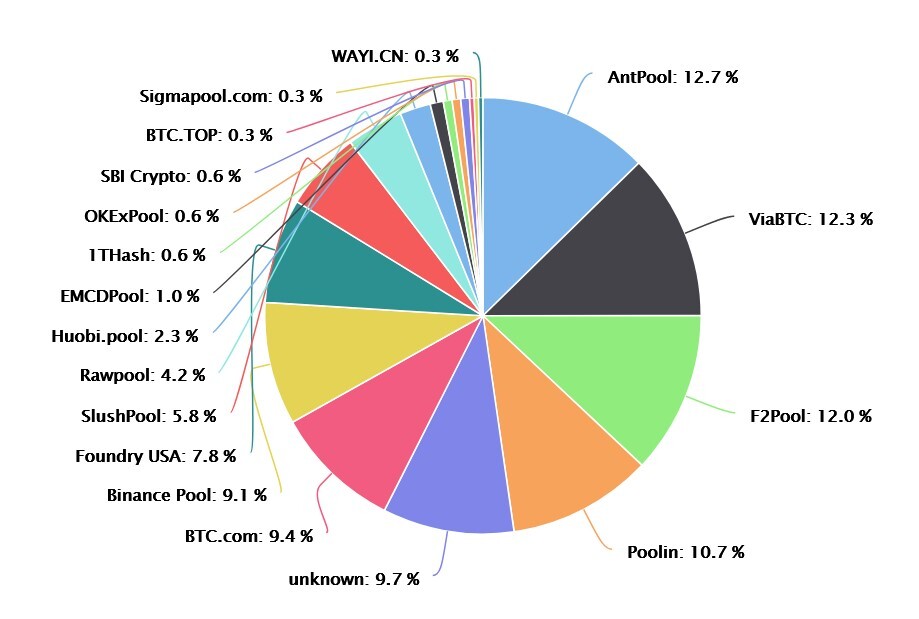Bitcoin’s Death Cross, Crypto Miner Migrations & Buying Opportunities
As the price of Bitcoin continued to plunge, short-term traders became increasingly angsty as the so-called “death cross” in Bitcoin’s price history was approaching fast. In technical analysis used for short-term trading, the death cross refers to the phenomenon where the 50-day moving average line crosses under the 200-day moving average line, as shown in the image below. “Death cross”.


As the price of Bitcoin continued to plunge, short-term traders became increasingly angsty as the so-called “death cross” in Bitcoin’s price history was approaching fast.
In technical analysis used for short-term trading, the death cross refers to the phenomenon where the 50-day moving average line crosses under the 200-day moving average line, as shown in the image below.

“Death cross” does sound morbid, but is it a sign of an upcoming crypto Armageddon, or is it something less sinister, and rather more like a naturally recurring event?
Death cross demystified
The death cross is not unique to the crypto market. During the Wall Street Crash in 1929 and the Financial Crisis in 2008, the death cross appeared as selling pressure increases exponentially over a short period of time.
Of course, this is not necessarily the cause for concern, as the US stocks did recover and the global economy returned stronger than ever.
Now, we are seeing it reappear on 21 June 2021 on Bitcoin’s price chart. Prominent figures in the crypto industry, such as Coinbase co-founder Fred Ehrsam, have warned that this could be bad news for a great majority of cryptocurrencies.
Ehrsam warned that “most” cryptocurrencies and crypto-assets “won’t work”. He added that “90% of NFTs [non-fungible tokens]” will have “little to no value in three to five years.”
It is crucial to note that the 90% may not at all include the already well-known crypto assets such as Bitcoin, Ethereum, and many other popular tokens listed on most major exchanges worldwide.
Note that it is relatively easy to create a token, say an ERC-20 token on Ethereum, and to have it issued and traded on decentralised exchanges such as Uniswap.
Hundreds of crypto tokens have been issued on the platform and have failed. A few dozen tokens and crypto assets have had their share of publicity, which boosted their demand as fast as the price had crashed only a few days later.
Still, such a statement is frightening to those who are not too familiar with the crypto space. How would you know that Bitcoin is not one of the 90% of the crypto assets that will fail?
Read more: What are ERC20 tokens?
Looking at the full picture: China crackdown and crypto miners’ exodus
It is easy to get caught up in the weakening crypto market, with the addition of a terrifying crypto jargon. But many short-term traders have missed the big picture, and do not try to piece together separate events to try to rationalise the irrational market fears at the moment.
News of China’s crackdown on crypto trading, crypto payments, and even crypto mining facilities have become commonplace over the years, yet most new traders who hopped into the Bitcoin bandwagon may have never been exposed to this news before, likely causing panic sellouts.
The fear, uncertainty and doubt (FUD) was amplified as Bitcoin’s on-chain data implied a weakening hash rate (computational power or network size) of Bitcoin. For instance, transaction times slowed from 10 minutes per block to more than 12 minutes.
Little do people know that the Bitcoin network, and many blockchains that are based on the Proof of Work (PoW) consensus algorithm, can lower the mining difficulty when fewer Bitcoin miners power the network.
Lower difficulty mining could attract more miners to join in place of miners originating from China. In fact, some observers of the Bitcoin mining pool have identified an increasing number of “unknown” miners or mining pools in the past three days following the news of the crackdown.
Learn more: What is Proof of Work (PoW)?

While parts of the Bitcoin network shut down, the network’s decentralised nature meant that Bitcoin is still pretty much alive as miners elsewhere back up the network. This is part of the intentional design of Bitcoin.
There was also news that a few large crypto mining companies such as Bit Mining are leaving China to find places that are more miner-friendly, such as the United States (or Kazakhstan, in the case of Bit Mining). If anything, this should be a cause for celebration.
As miners set up a new center of operations overseas, the Bitcoin network becomes even more secure and decentralised. Granted, the mining companies that were previously based in China would have to part with the cheap coal and hydroelectric power that the Chinese provinces Sichuan and Xinjiang have offered for so long.
On the other hand, an increased operational cost could very well push up the price of Bitcoin and other PoW-based cryptocurrencies like Ethereum.
Related: What is Bitcoin and how does it work?
Buying opportunities for “diamond hands”
Long-term “Bitcoin bull” and investor Meltem Demirors, who is also the chief strategy officer at digital asset investment firm CoinShares, has told CNBC that this whole phenomenon is part of a much larger price correction that is bound to happen anyway for Bitcoin.
“We had 200 days of market expansion. You can’t have a number go up forever. That doesn’t happen in any market … what we’re seeing is a correction, a contraction…” Demirors said in an interview.
“Diamond hands” is another fun crypto jargon that refers to long-term holders of crypto assets that are not easily swayed by price volatility.
Furthermore, Demirors have pointed out from on-chain activity that long-term investors are “buying the dip” and accumulating Bitcoin and other crypto-assets while the price is at the new monthly lows.
“If we look at on-chain activity, wallets that have been holding for a long time have actually been using this opportunity to accumulate,” she said.
Although the identity of wallet holders remains anonymous, blockchain analysts can still witness that some wallets that have been in existence for a longer time tend to be the ones that do not sell out.
In contrast, new retail investors who created new wallets more recently tend to sell easily.
“There’s a lot of retail that entered, didn’t do their research, and is now selling. There are not a lot of long-term holders selling,” Demirors explained.
“Diamond hands”, and an increasing number of them over the years, could be the reason why Bitcoin’s price has maintained an uptrend since its inception in 2009.
As newbie crypto investors get to know more about the crypto industry, their investing strategies may change, adopting a “buy-and-hold” mentality instead of trying to time the market.
Check the latest crypto rates: View the latest crypto prices with our live tracker.
More weekly updates coming your way
Subscribe to our monthly newsletter, and visit our site every week to find the latest, most important updates, with our commentary to help you make informed decisions.
Further reading: Explore more topics on all things crypto by visiting our Learn Site.
Share to
Stay curious and informed
Your info will be handled according to our Privacy Policy.
Make sure to follow our Twitter, Instagram, and YouTube channel to stay up-to-date with Easy Crypto!
Also, don’t forget to subscribe to our monthly newsletter to have the latest crypto insights, news, and updates delivered to our inbox.
Disclaimer: Information is current as at the date of publication. This is general information only and is not intended to be advice. Crypto is volatile, carries risk and the value can go up and down. Past performance is not an indicator of future returns. Please do your own research.
Last updated October 18, 2022





